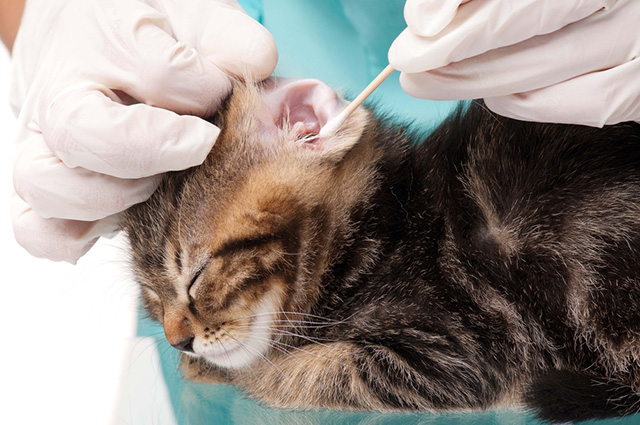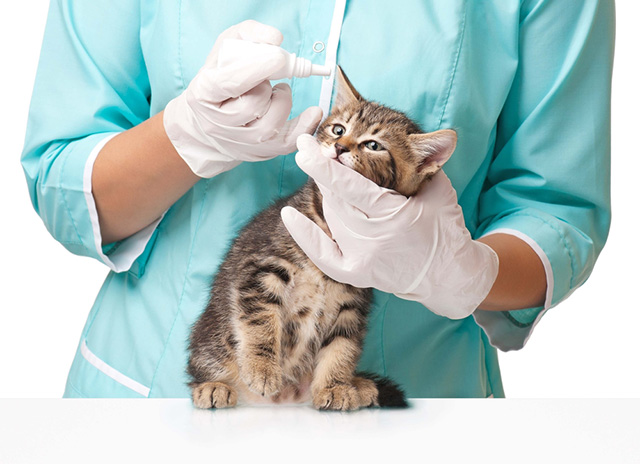You should check your cat’s ears regularly to ensure they stay healthy. Clean, odour-free, pale pink ears with a minimal accumulation of wax are indications of healthy ears.
What are the signs of ear disease?
Signs to look out for include:
- Unpleasant odour
- Excessive scratching and pawing of the ear and head
- Sensitivity to touch, often resulting in pain
- Constant tilting/shaking of the head to one side
- Black or yellowish discharge
- Redness or swelling of the ear flap or canal
- Changes in behaviour such as listlessness, depression or irritability
- Accumulation of dark brown wax
- Loss of balance or hearing and disorientation
- Bleeding or discharge resembling coffee grinds

There are a range of different ear conditions found in cats
Otitis Externa in cats
An infection of the external ear canal and Otitis Media, the middle ear, is usually caused by ear mites, bacteria or yeast. Other potential causes include injury, debris, polyps, tumours or foreign objects lodged in the ear canal.
When seeking treatment of an ear infection you should act quickly. If your cat has an ear infection, he or she may be in considerable discomfort. Medicated ear drops designed for topical use contain a variety of ingredients.
Antibiotics are used for bacterial infections while antifungals are administered for yeast. The anti-inflammatory, usually a steroid, will reduce pain, swelling and redness.
Your veterinary surgeon will determine this during your visit and suggest the best course of action.
How do ear mites affect cats?
Ear mites are common parasites that are highly contagious, often contracted by pet- to-pet contact. The most common sign of ear mites is excessive itching. Ear mites create dark, crumbly debris that look like coffee grinds.
Ear flap haematoma
A haematoma of the ear flap means blood has accumulated in the ear flap (pinna) due to vigorous head shaking, scratching or trauma to the ear area result in damage to the blood vessels. This may be due to an underlying inflammatory condition either related to the ear or elsewhere on the body. Fleas are always an important consideration in such cases, often set off by infection, mites, fleas or debris.
Deafness in cats
Deafness in cats is usually brought on by age, trauma, loud noise or infection and can also be hereditary or congenital. Once diagnosed, clinical deafness is unfortunately, a lifelong condition. Domestic cats with a white coat and blue eyes are more prone deafness.
How do I prevent cat ear problems?
Regularly checking your cats ears for signs of redness, odour or excessive discharge and taking them to a veterinarian for prompt treatment if this occurs is the best measure to prevent ear problems from getting worse.
How to administer ear drops or ointment to cats
- Read the label instructions carefully for correct dosage
- Gently pull the ear flap over the head, squeeze out the desired amount and apply it to the lowest part of the ear canal
- Gently massage the ear area to help work the medication deeper into the ear canal

